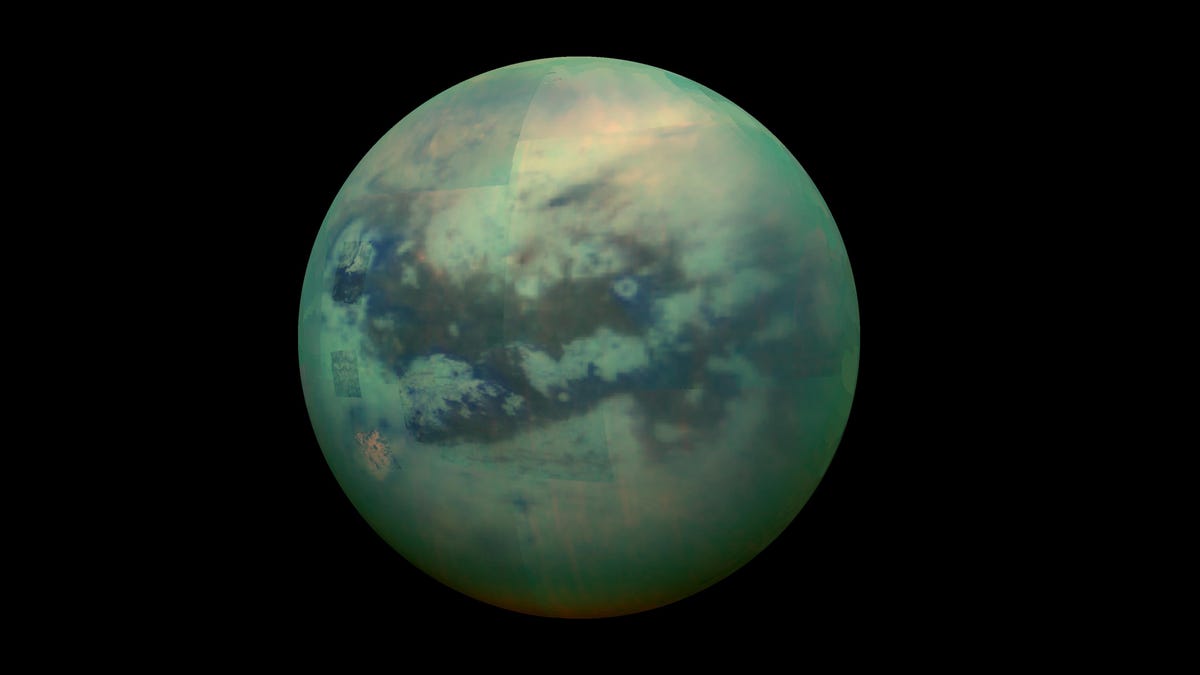NASA's Webb Telescope Delivers Extraordinary Look at Titan, Saturn's Largest Moon
Seeing a solar system spectacle in a new light.

Is that Earth? Oh, nope, that's Saturn's largest moon, Titan.
Saturn moon Titan is one of the jewels of the solar system. It's greenish-blue hues are reminiscent of Earth, and it's the only other place in our part of the cosmos that we know to have roiling seas and wondrous clouds. But Titan is kind of strange; an alternate reality Earth. Its clouds and seas, rivers and lakes aren't composed of water. They're made of methane and ethane.
Yeah, it's pretty wild. You wouldn't really want to be caught out in a storm nor take a cheeky dip at the beach over summer. It's unusual (and fascinating) atmosphere makes the moon, Saturn's largest, the subject of intense study.
Back on Nov. 5, researchers received some of the first images of Titan snapped by NASA's revolutionary new James Webb Space Telescope. In a blog post by NASA on Thursday, planetary scientist Conor Nixon describes the team's introduction to the new images via Sebastien Rodriguez, a researcher at Universite Paris Cité. "At first glance, it is simply extraordinary!" he wrote.
James Webb's view of Titan reveals clouds in Titan's atmosphere. Kraken Mare is believed to be home to a methane sea.
The images were captured by Webb's NIRCam, its primary imaging device, which detects infrared light. Webb's view revealed two clouds in the northern hemisphere, labelled in the image above. Seeing clouds has long been predicted, thanks to previous observations of Titan.
NASA cautions this work is yet to be peer-reviewed. Follow up analysis with the Keck telescope, a land-based observatory based in Hawaii, helped examine how the clouds might move or change shape. That telescope helped see clouds two days later, on Nov. 6. It's currently unclear if these are the same clouds and they've changed shape -- or completely new clouds. Titan's clouds are expected to form and dissipate rapidly.
This won't be the last view we get from Webb, either. Further data is on its way, and its MIRI instrument will deliver first data in mid-2023. That's particularly exciting because Titan hasn't been seen in the wavelengths of infrared MIRI utilizes and should provide additional information about its atmosphere.

